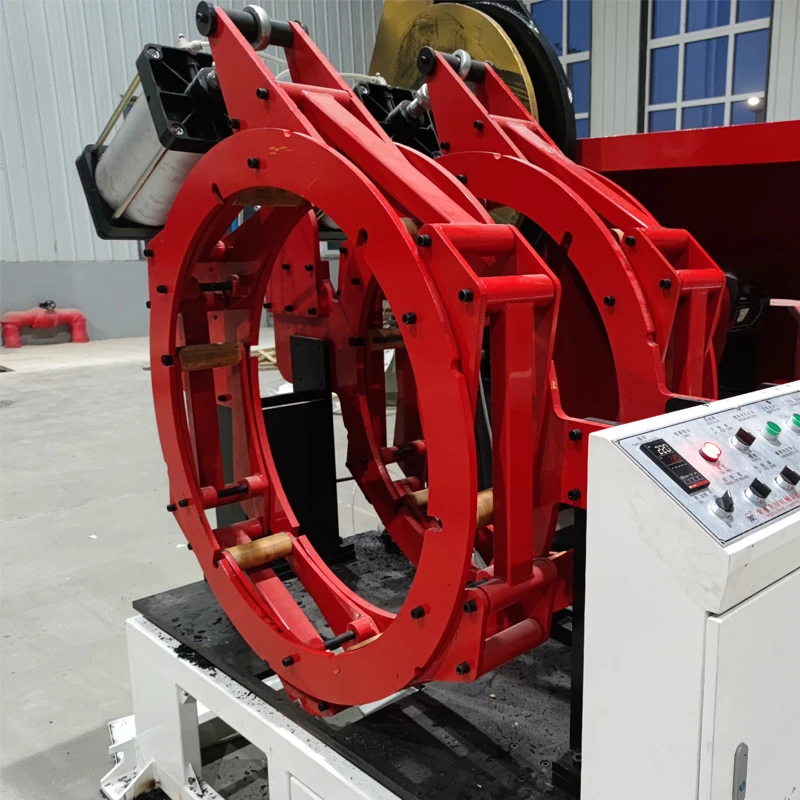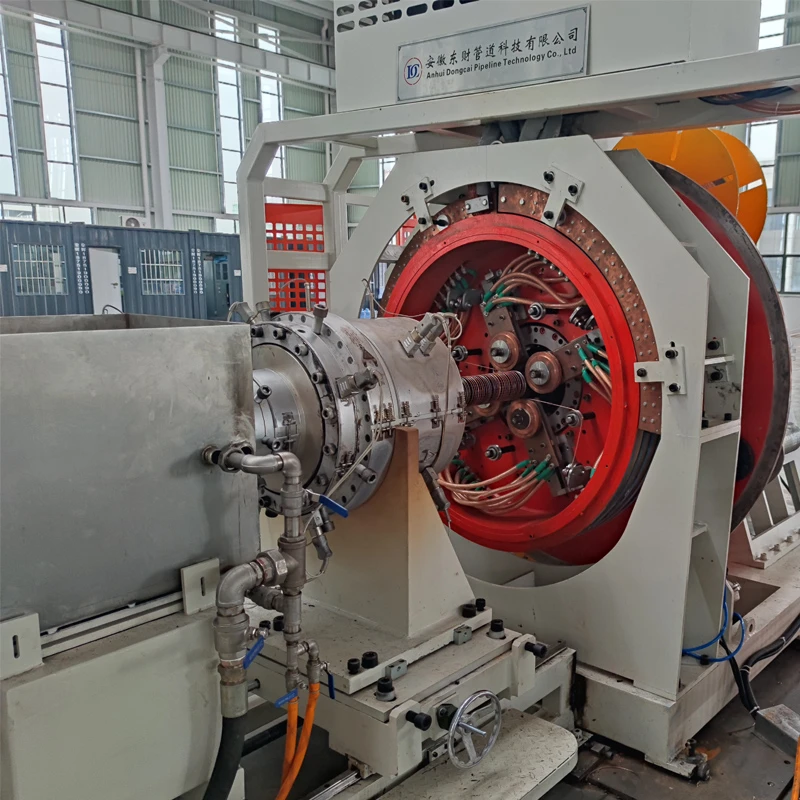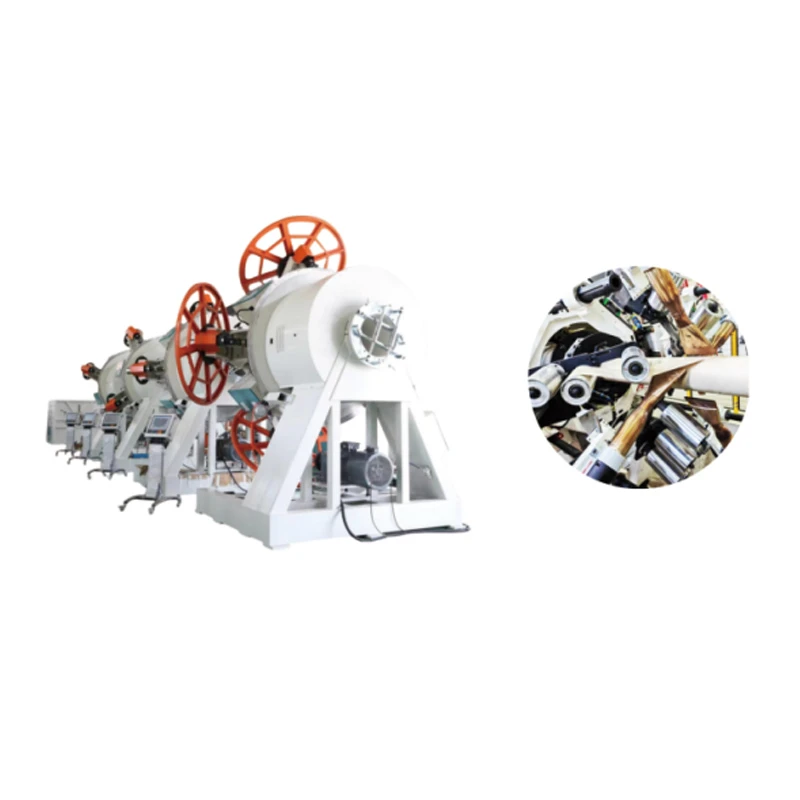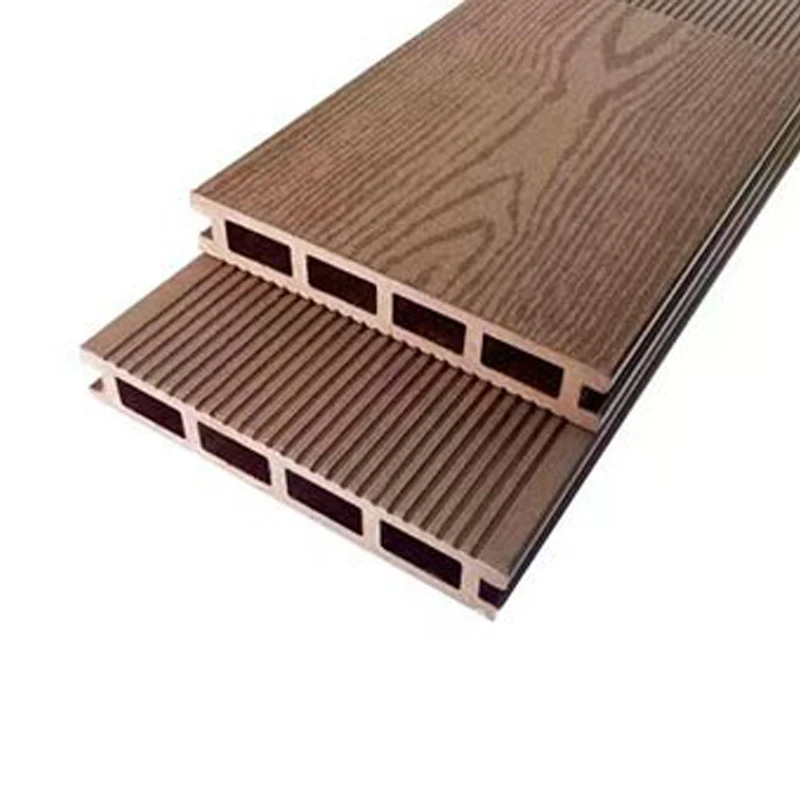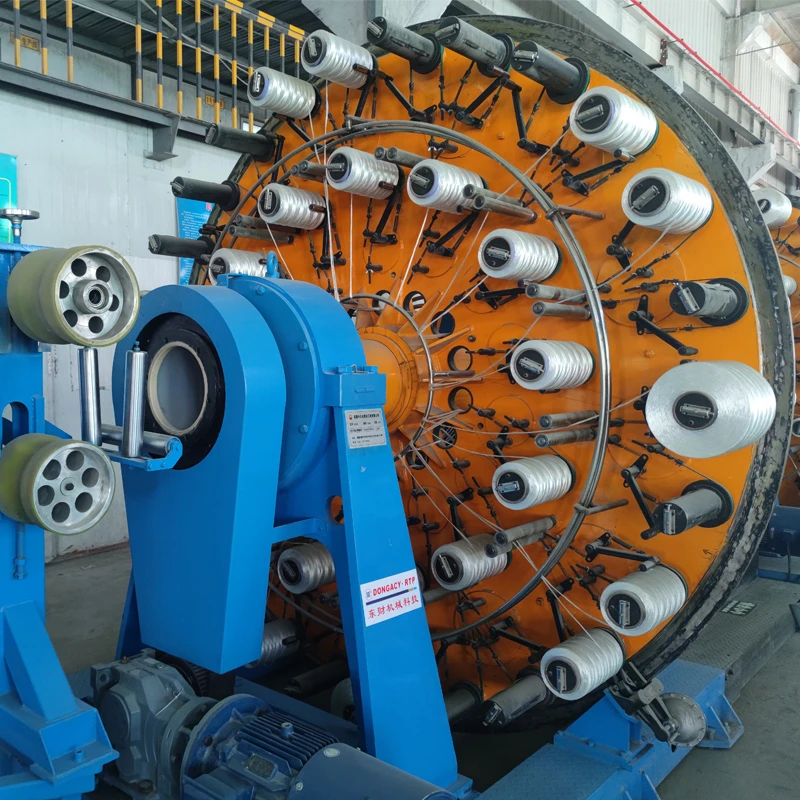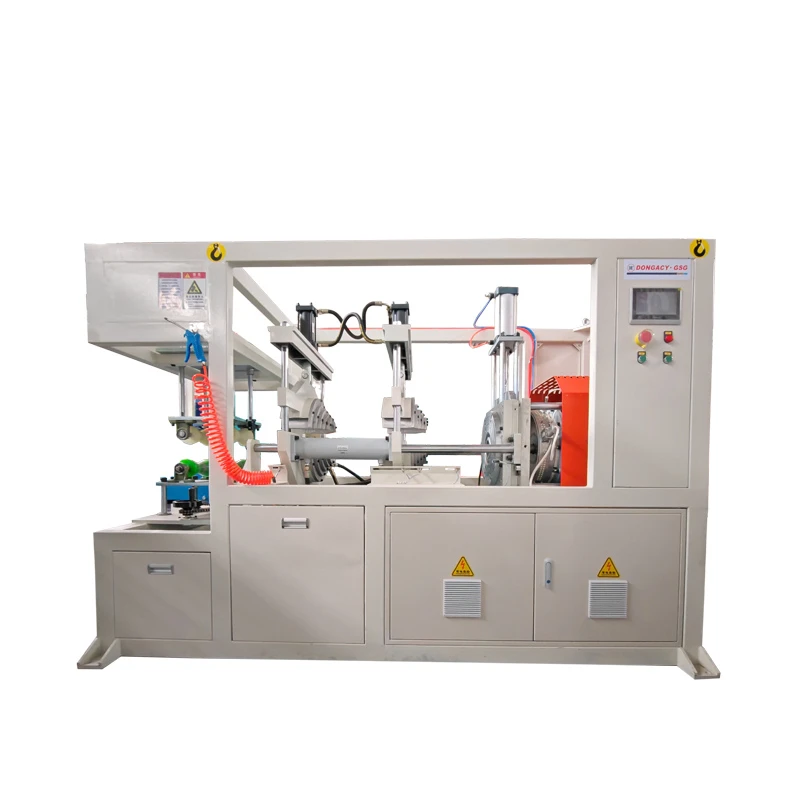
Introduction
The composite pipe production line represents a cutting-edge solution in modern infrastructure and industrial applications. This advanced production system integrates high-speed extrusion technology, precision engineering, and intelligent automation to manufacture steel wire mesh skeleton reinforced polyethylene (HDPE) composite pipes. These pipes combine the strength of steel wire mesh with the corrosion resistance and flexibility of HDPE, making them ideal for high-pressure and demanding environments. The system is designed to deliver high output, energy efficiency, and stability, ensuring reliable performance in diverse applications.

Product Overview
The High Speed Steel Wire Mesh Skeleton Reinforced Polyethylene Composite Pipe Production Line is a fully automated system that incorporates multiple critical components, including a high-speed extruder, precision die, vacuum setting table, traction unit, cutting machine, and a full-automatic sealing machine. The entire line is controlled by a PLC (Programmable Logic Controller) system, ensuring seamless operation and high levels of automation. This design not only enhances production efficiency but also reduces energy consumption and operational costs. The system is engineered to maintain consistent performance even during steel wire replacement, minimizing downtime and product rejection rates.

Key Features and Highlights
1. Advanced Electrical and Mechanical Design
The main engine of the production line utilizes international first-line brand electrical components, ensuring reliability and durability. The dies and screws are made from 40Cr alloy structural steel, offering exceptional strength and wear resistance. The ceramic heating rings are wrapped with an insulation layer for rapid and even heating, while the inner and outer walls are equipped with incremental rings to enhance structural stability. The gear box features a condenser, ensuring a stable and fast discharging speed.
2. Precision and Stability in Vacuum Processing
The vacuum box is constructed from 304 stainless steel and is bent and welded as a single unit. All internal components are laser-cut for precision, and the spray port is controlled by an intensive frequency converter. The system maintains constant temperature control for water cooling, ensuring low noise levels and efficient heat dissipation. The disc-type 304 ball valve allows for electrically adjustable crossbars, providing enhanced operational flexibility.
3. Intelligent Sealing Technology
The full-intelligent automatic sealing machine eliminates the need for on-line guards, offering automatic tube unloading and a secure sealing effect. This feature reduces labor requirements and ensures consistent quality in the final product.
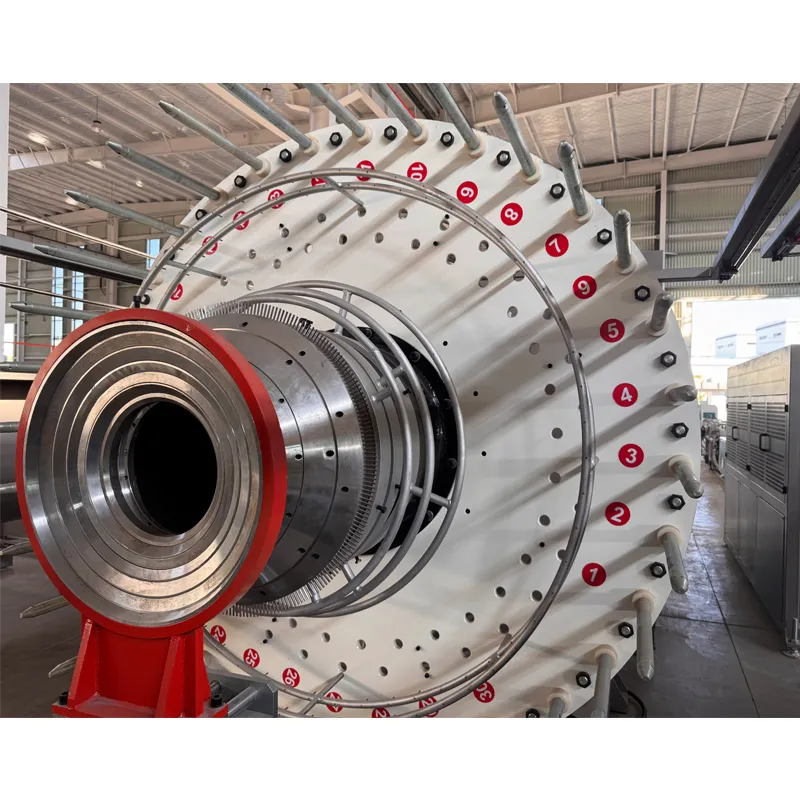
Material and Structural Characteristics
The steel wire mesh composite pipe is composed of high-strength steel wire and thermoplastic polyethylene. The steel wire mesh, formed by spirally winding high-strength steel wire, serves as the reinforcement layer, while the high-density polyethylene (HDPE) matrix provides corrosion resistance and flexibility. A high-performance HDPE modified bonding resin is used to connect the steel wire skeleton with the inner and outer HDPE layers, ensuring a strong composite effect. This design enhances the pipe's mechanical strength, thermal stability, and long-term durability.
Performance Advantages
- Corrosion Resistance and Longevity: The HDPE matrix prevents rust and scaling, making the pipe ideal for water and gas transportation in harsh environments.
- High Strength and Flexibility: The steel wire mesh skeleton significantly improves the pipe's tensile strength and resistance to external pressure.
- Low Friction and Smooth Flow: The inner surface of the pipe ensures minimal resistance, enhancing fluid transport efficiency.
- Thermal Stability: The pipe maintains its structural integrity under varying temperatures, reducing the risk of cracking or deformation.
- Lightweight and Easy Installation: The reduced weight simplifies transportation and installation, lowering construction costs.
Production Technology and Flexibility
The production line employs advanced technology to ensure stable and high-quality output. By adjusting parameters such as steel wire diameter, mesh spacing, plastic layer thickness, and plastic type, the system can tailor the pipe's properties to meet specific requirements. This flexibility allows the production line to cater to diverse applications, including high-pressure pipelines, underground conduits, and industrial systems. The PLC control system ensures precise coordination of all processes, minimizing errors and optimizing production efficiency.
Applications and Industry Use Cases
The steel wire mesh reinforced HDPE composite pipes are widely used in various sectors, including:
- Municipal Engineering: Water supply, drainage, and sewage systems.
- Industrial Engineering: Transportation of chemicals, gases, and liquids in factories.
- Construction Engineering: Underground cable protection and structural support.
- Sanitary Pipelines: Waste management and irrigation systems.
- Oil and Gas Industry: High-pressure pipelines for crude oil and natural gas transportation.
Installation and Maintenance
The lightweight design of the composite pipes simplifies installation, reducing labor and equipment costs. The pipes are connected using electric welding joints, a mature and reliable technology that minimizes leakage risks. Regular maintenance involves inspecting the joints and ensuring the integrity of the HDPE layers, which are resistant to aging and degradation. The system's durability and low maintenance requirements make it a cost-effective solution for long-term use.
Technical Specifications
| Model | DCS-160 | DCS-315 | DCS-630 | DCS-800 | DCS-1000 | DCS-1200 |
|---|---|---|---|---|---|---|
| Pipe Diameter (mm) | 50-160 | 110-315 | 315-630 | 500-800 | 710-1000 | 800-1200 |
| Production Speed (m/min) | 2.4 | 2.4 | 1.2 | 1.0 | 0.6 | 0.6 |
| Power Consumption (kW) | 110 | 170 | 260 | 360 | 350 | 460 |
| Installed Power (kW) | 385 | 545 | 855 | 1150 | 1150 | 1400 |
| Dimensions (L x W x H, m) | 73 x 4.7 x 3 | 75 x 5 x 4 | 76 x 6 x 4 | 80 x 6 x 4 | 86 x 7 x 4 | 100 x 7 x 4.7 |
Company Background: Anhui Dongchai Machinery Technology Co., Ltd.
Founded in [year], Anhui Dongchai Machinery Technology Co., Ltd. is a leading manufacturer of industrial machinery and production equipment. With a focus on innovation and quality, the company specializes in designing and producing advanced systems for the construction, energy, and manufacturing sectors. Their expertise in composite pipe production lines has earned them a reputation for reliability and technical excellence. The company's commitment to customer satisfaction and continuous improvement ensures that their products meet the highest industry standards.
Conclusion
The High Speed Steel Wire Mesh Skeleton Reinforced Polyethylene Composite Pipe Production Line is a testament to modern engineering and manufacturing innovation. By combining advanced technology, durable materials, and intelligent automation, this system delivers exceptional performance and versatility. Its applications span across multiple industries, making it an essential solution for modern infrastructure projects. For more information about the product or to explore hdpe machine price, visit the official website of Anhui Dongchai Machinery Technology Co., Ltd.
References
According to the National Institute of Standards and Technology (NIST), advancements in manufacturing technology are critical for industrial innovation. NIST's research and standards play a vital role in ensuring the quality and reliability of modern production systems (NIST, 2025).
-
Innovative Solutions in PVC Pipe Production LineNewsJul.18,2025
-
Innovative Solutions in Pipe Extrusion Production LineNewsJul.18,2025
-
Advanced Plastic Profile Extrusion SolutionsNewsJul.18,2025
-
PVC Profiles: The Future of Durable and Cost-Effective Construction SolutionsNewsJun.06,2025
-
PVC Pipe Extrusion LineNewsJun.06,2025
-
High-Quality Polyethylene Pipe Production LineNewsJun.06,2025
-
High-Performance Tube Production LineNewsJun.06,2025

